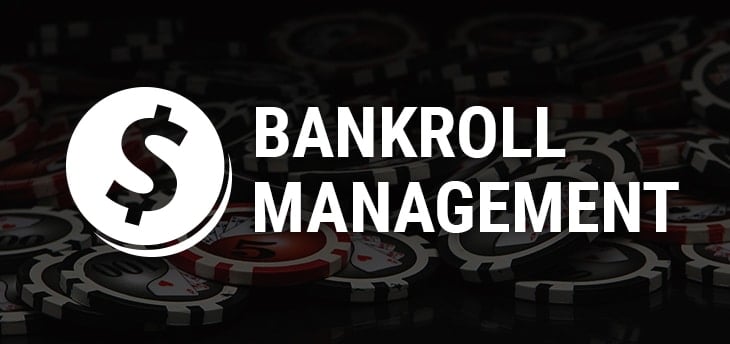Bankroll management is often the unsung hero of successful gambling, yet it is critical for anyone looking to elevate their game to a professional level. At its core, bankroll management is about creating a strategy for how much money you’re willing to allocate to gambling activities and how you will manage that money over time. Here are some key considerations for mastering bankroll management:
- Set a Budget: Before you place any bets, determine a clear budget. This should be an amount you can afford to lose without affecting your financial wellbeing. The budget should be strictly adhered to, ensuring that you never gamble with money meant for essentials.
- Understand the Unit Size: Establish your unit size based on your total bankroll. A common principle is to wager between 1% to 5% of your total bankroll on a single bet. This helps to mitigate risk, allowing you to withstand variance and avoid going broke.
- Track Your Progress: Maintaining a record of your wins, losses, and overall performance is essential. This helps you identify patterns in your gambling behavior and refine your strategy over time. Using tools like spreadsheets or dedicated gambling software can make this much more manageable.
- Adjust Your Strategy as Needed: As you gain experience and your bankroll fluctuates, it’s important to reassess your betting strategy. A winning streak might encourage you to increase wagers, while a downswing could necessitate tightening your budget.
- Separate Your Bankrolls: If you are involved in different types of gambling (e.g., sports betting, casino games, poker), it’s wise to keep separate bankrolls for each activity. This prevents one type of gambling from affecting another, thereby maintaining a clear picture of your performance.
- Psychological Discipline: Effective bankroll management is as much about psychology as it is about numbers. Stay disciplined and stick to your predetermined strategy, even when the temptation to chase losses becomes overwhelming. Emotional decisions often lead to poor outcomes.
In conclusion, professional-level bankroll management is not just about the money; it’s a mindset. Implementing these practices will not only prolong your gambling experience, but also enhance your chances for success over the long run. Always remember that responsible management is key to your journey as a professional gambler.
Advanced Staking Plans
Understanding and implementing advanced staking plans can significantly enhance your bankroll management strategy. These plans help you determine how much to bet based on various factors, ensuring that you minimize risk while maximizing potential returns. Here are some of the most effective staking plans used by professional gamblers:
- Flat Betting: This straightforward approach involves betting the same amount on every wager regardless of previous results. This method minimizes risk and is ideal for beginners as it ensures a disciplined approach to betting.
- Percentage of Bankroll Staking: With this strategy, you bet a fixed percentage of your total bankroll on each wager. For example, if your bankroll is $1,000 and you decide to stake 2%, you would bet $20. This plan adjusts your bet size as your bankroll increases or decreases, helping to protect your funds during losing streaks.
- Kelly Criterion: This formula helps you determine the optimal bet size by taking into account your edge and the odds of a specific wager. The formula is: Bet Size = (Wagering Probability * Odds – 1) / Odds. This advanced strategy aims to grow your bankroll efficiently but requires accurate assessments of your true edge.
- Martingale System: A popular yet risky approach, the Martingale system involves doubling your bet after every loss. The idea is that when you finally win, you will recover all previously lost money plus gain a profit equal to your original stake. Caution is advised, as this strategy can lead to significant losses if you encounter a long losing streak.
- Fibonacci Sequence: This progressive betting system is based on the Fibonacci sequence, where each number is the sum of the two preceding ones. In betting terms, after a loss, your next bet will be equal to the sum of your last two bets. This method allows you to increase your stake gradually while managing risk effectively.
Choosing the right staking plan ultimately depends on your personal gambling style, risk tolerance, and the type of bets you make. Always remember that effective bankroll management is a cornerstone of successful gambling, allowing you to play responsibly while maximizing your chances for profitability.

Recovering from Downswings
Experiencing a downswing can be one of the most challenging aspects of gambling, especially for serious players. It’s crucial to approach recovery with a clear head and a solid plan. Here are some strategies to consider:
- Stay Calm and Emotionally Balanced: The first step to recovering from a downswing is to maintain your composure. Reacting emotionally can lead to poor decisions. Take a step back, breathe, and remind yourself that losing streaks are a natural part of gambling.
- Review Your Play: Analyze what went wrong during your downswing. Look for patterns in your gameplay that might have contributed to your losses. Were you making rash decisions? Were there times you strayed from your staking plan? Critical self-evaluation is essential.
- Adjust Your Goals: Reassess your short-term and long-term goals. During a downswing, it can be helpful to set smaller, more manageable objectives to help rebuild confidence. Instead of focusing on recouping all your losses immediately, aim for incremental wins that will boost your morale.
- Modify Your Staking Plan: A downswing might be a sign that it’s time to tweak your existing staking strategy. Consider lowering your stakes temporarily. This approach allows you to still participate without putting undue pressure on your bankroll.
- Take a Break: If you find yourself frustrated and unable to recover, consider taking a break. Stepping away from the tables can help clear your mind and reduce the emotional toll of a downswing. Use this time to recharge and reassess your strategies.
- Consult with Fellow Gamblers: Discussing your experiences with trusted peers or mentors can provide new insights and perspectives. They might offer advice on how to approach your situation, or at the very least, you will find comfort in knowing you’re not alone in facing such challenges.
- Focus on Risk Management: Emphasize bankroll management strategies to mitigate risks. Avoid chasing losses, as this can lead to further financial strain. Make strategic decisions based on your current bankroll and stick to your revised plan.
- Stay Committed to Learning: Use downswings as an opportunity to continue your education. Explore new strategies, attend workshops, or read books on gambling theory. The more you learn, the better equipped you’ll be to handle future challenges.
Remember, every gambler faces downswings at some point. The key is to bounce back stronger by implementing these strategies and maintaining a disciplined approach to your gameplay.
When to Walk Away
Knowing when to walk away from gambling is just as crucial as having a solid bankroll management strategy. Many players, both seasoned and novices, struggle with this decision, often leading to detrimental outcomes. Here are some key indicators and tips to help you recognize when it’s time to take a break or step away entirely:
- Setting Limits: Before you start gambling, establish clear limits on how much time and money you are willing to spend. If you reach these limits, it’s time to walk away, regardless of whether you are winning or losing.
- Emotional State: If you find yourself feeling frustrated, angry, or overly excited, it’s a sign to take a step back. Gambling should be a fun and enjoyable activity; if your emotions are negatively influencing your decisions, it’s best to pause.
- Chasing Losses: One of the biggest mistakes players make is trying to recover lost money by betting more aggressively. If you notice this trend in your behavior, it’s a strong indicator that you should walk away and reassess your strategy.
- Losing Streak: If you experience a significant losing streak, consider taking a break. Continuing to play in such situations can often lead to decisions that are not based on strategy but rather on the desire to recoup losses.
- Time Management: Gambling can be addictive, and it’s easy to lose track of time. If you find that you’re spending more time than intended, or it’s interfering with your personal life or responsibilities, it’s essential to walk away.
Ultimately, walking away is about maintaining perspective and keeping your gambling experience enjoyable. Recognizing these warning signs and acting upon them is a significant part of professional-level bankroll management. Remember, it’s not just about winning; it’s about playing smart and preserving your financial and emotional well-being.

